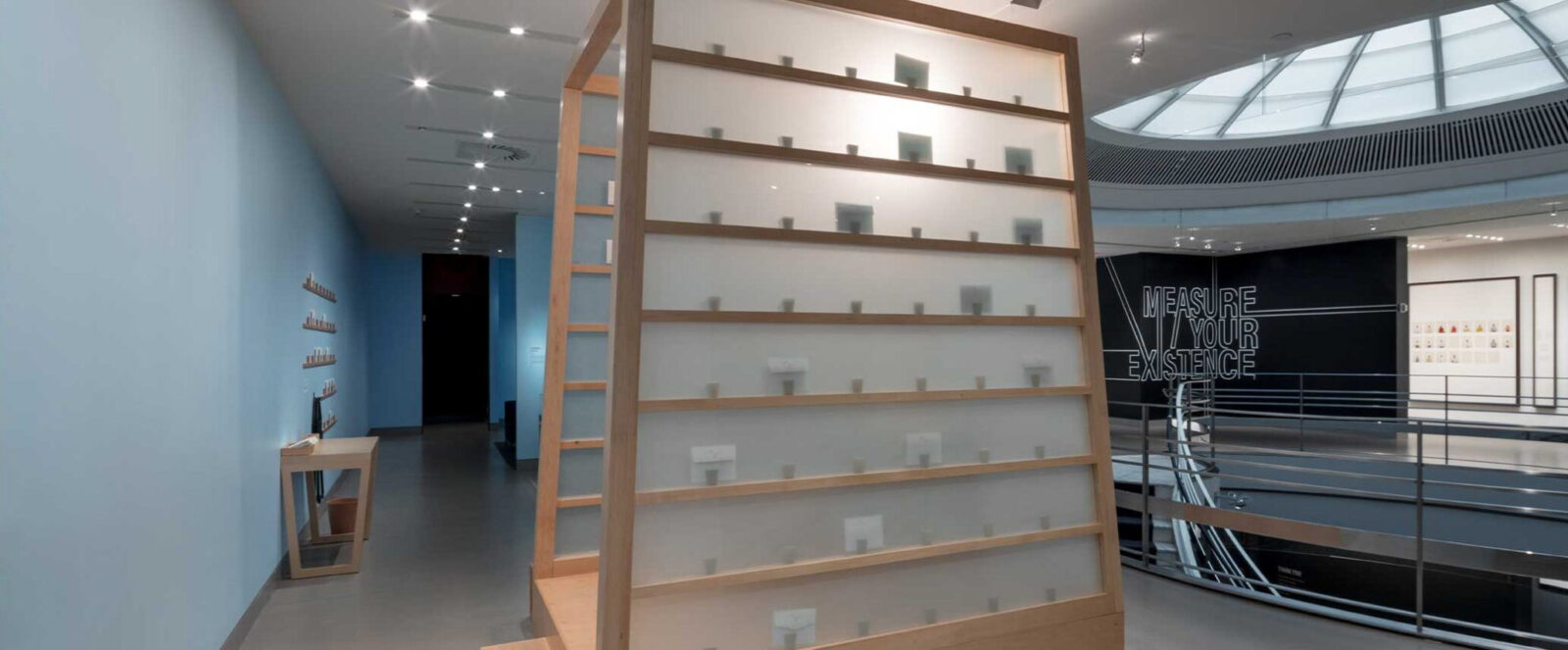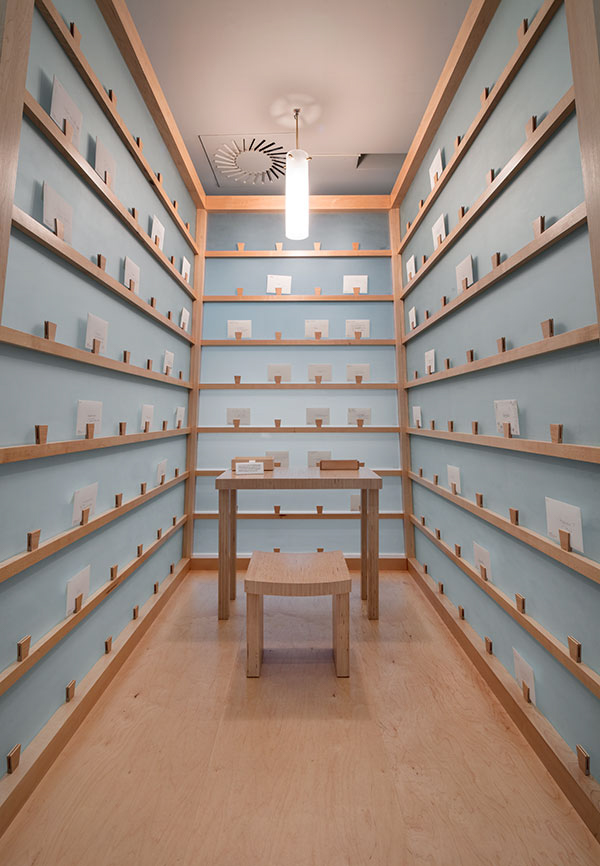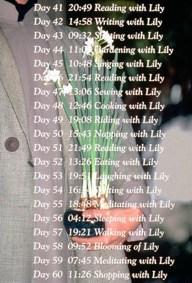
Installation view of Lee Mingwei’s work in Measure Your Existence at the Rubin Museum of Art; photograph by David De Armas, courtesy Rubin Museum of Art

Installation view of Lee Mingwei’s work in Measure Your Existence at the Rubin Museum of Art; photograph by David De Armas, courtesy Rubin Museum of Art
“Memory is a volatile living thing; it is not set in a fixed space and time.”—Lee Mingwei (Artforum, August 2, 2013)
The fleeting, impermanent here and now—in all its destruction, regeneration, and intense immediacy—is the ultimate reality. Measure Your Existence questions and expands on the Buddhist concept of impermanence through artworks by six contemporary artists who explore duration, memory, fate, history, loss, disappearance, reappearance, and repetition.
Each post in this series focuses on one artist, highlighting an artwork on view in the exhibition and another one from his or her oeuvre.
Lee Mingwei creates the conditions for experiential interaction. He views gift giving, gift exchange, and sharing as opportunities for museum visitors to experience trust, express previously unspoken thoughts and feelings, and recognize the ever-changing relationship between givers and recipients.

Lee Mingwei (b. 1964, Taichung, Taiwan; lives and works in New York City and Paris); The Letter Writing Project; 1998–present; mixed-media interactive installation, wooden booth, writing papers, envelopes; photograph by David De Armas, courtesy Rubin Museum of Art
After his maternal grandmother passed away in the late 1990s, Lee wrote many letters to her as if she were still alive, sharing thoughts and emotions he had left too late to express. In The Letter Writing Project visitors are invited to sit in the booth and write a letter to a deceased or absent loved one, expressing feelings of forgiveness, apology, or gratitude. They can leave the letter unsealed for other visitors to read, or seal the letter with an address for the Museum to post.
Lee describes The Letter Writing Project as a meaningful gift exchange between the visitor and the artist. Since the work debuted in 1998, the artist has collected over one hundred thousand letters, some unsealed and others sealed with no address. Lee plans to perform a fire ceremony to release the deep emotions written in the letters to the sky or water.

Lee Mingwei (b. 1964, Taichung, Taiwan; lives and works in New York City and Paris); 100 Days with Lily; image courtesy the artist
After Lee’s grandmother died he spent one hundred days living with a lily plant. The Chinese mourning tradition lasts forty-nine days with the family reciting prayers every seven days. The final ceremony after the hundredth day completes the mourning period.
Lee planted a lily bulb in a container and spent hours with the lily as it went through the process of germination, sprouting, blossoming, fading, and death. The experience of living with the lily plant through its growth and decay gave Lee an up-close, real-time experience of the span of a life in minutes, hours, and days. After the lily died on the seventy-ninth day, Lee continued carrying the plant with him for twenty-one more days, until the hundredth day when the performance ended.
Lee’s interest in marking time, change, and reciprocity through these works resonates with the concept of impermanence. As the artist said in an interview for Spiral magazine, “Go with and accept the fact, the real fact that everything changes. There is nothing permanent. Accept the idea of change.”
Lee’s The Letting Writing Project was in the exhibition Measure Your Existence at the Rubin Museum from February 7 to August 10, 2020.

Christine Starkman is a contemporary art curator interested in the global, transnational, and transcultural histories of modern and contemporary art between Asia, Europe, Latin America, and North America. She has been a curator at the Art Institute of Chicago, Cleveland Museum of Art, and Museum of Fine Arts, Houston. She has an MA in Japanese art and architecture from the University of Illinois, Urbana-Champaign, and did PhD coursework in art history at Rice University.
Get the latest news and stories from the Rubin, plus occasional information on how to support our work.